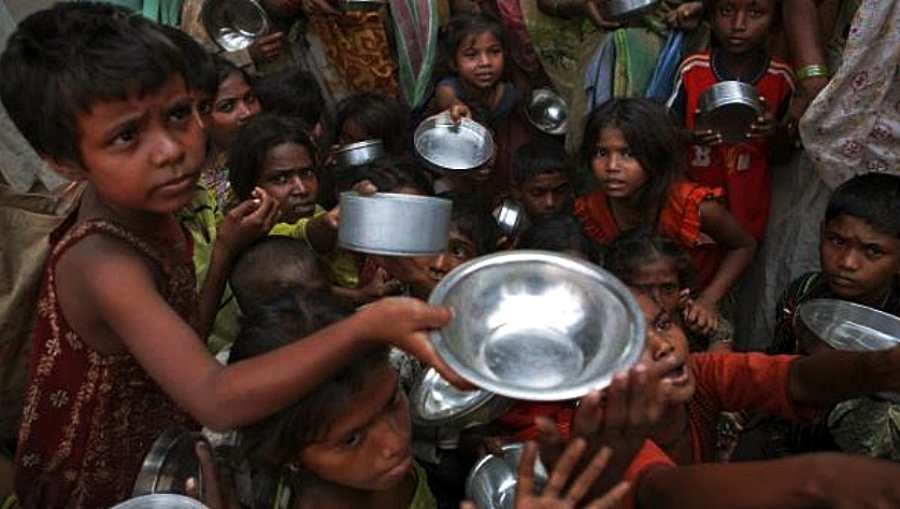Sat 14 October 2023:
India has been ranked 111 among 125 countries in the Global Hunger Index report released by two European agencies on October 12, 2023. India slipped four positions as compared to last year.
The only countries ranking lower than India are Timor-Leste, Mozambique, Afghanistan, Haiti, Guinea-Bissau, Liberia, Sierra Leone, Chad, Niger, Lesotho, Democratic Republic of Congo, Yemen, Madagascar, Central African Republic, South Sudan, Burundi and Somalia.
All these countries, which India has barely fared better than, are very small economies as compared to India. India is among one of the fastest growing ones.
Every other assessed country, besides these nations, had better outcomes than India.
India stands in a group of 40 countries where the scale of global hunger has been termed as ‘serious’. The overall GHI score of India, according to the current report is, 28.7. The calculation of this score is done on a 100-point scale. The higher the score, the worse the performance of the country.
‘Concern Worldwide’ and ‘Welt Hungerhilfe’, two NGOs from Ireland and Germany, respectively, have come out with the report. According to the publishers, it is a peer-reviewed report which has been prepared annually from 2006.
The report says that high scores may be a symptom of several underlying problems relating to the nutritional status of the country. “For some countries, high scores are driven by high rates of undernourishment, reflecting a lack of calories for large swathes of the population,” it says.
Four factors were taken into account for calculating the GHI scores: undernourishment (refers to the entire population – both children and adults); child stunting (share of children who have low height for their age); child under-5 mortality; and child wasting (children who have low weight for their height). All these indicators are components of the universally agreed UN Sustainable Development Goals (SDGs).
The report goes on to add that for some countries, a high GHI score may also reflect acute malnutrition among children and their poor nutrition levels, in addition to other “extreme challenges facing the population”.
“Broadly speaking, then, a high GHI score can be evidence of a lack of food, a poor-quality diet, inadequate child care-giving practices, an unhealthy environment, or a combination of these factors,” the report explains.
All data sets presented in this report are secondary data and sourced from various published reports.
India’s performance on four parameters
According to the report, India has the highest child ‘wasting’ (low weight for height) rate across the world, at 18.7%, reflecting acute undernutrition. In fact, ‘wasting’ is considered to be the worst form and indicator of all forms of child under-nutrition.
If a country has more than 15% of the children ‘wasted’, it has been marked as ‘very high’ level of concern in the report. India is the only country, thus, where the wasting has been put in the category of ‘very high’.
As far as childhood stunting (low height for age) goes, India, again, comes in the category of ‘very high’ risk countries. More than 35% children have been marked stunted in India, although several other African countries and some east-Asian countries perform worse than India on this parameter.
With about 16.6% of the overall population undernourished, India’s levels of undernourishment have been marked as of ‘medium’ risk. And, in under-5 mortality, India has been categorised as a country with ‘low risk’, with about 3.1% of children dying before the age of five.
The prevalence of anaemia among women aged 15-24 has been reported as a major problem for the country. More than 50% of women and adolescents are anaemic in the country – one of the highest across the world.
SOURCE: INDEPENDENT PRESS AND NEWS AGENCIES
______________________________________________________________
FOLLOW INDEPENDENT PRESS:
TWITTER (CLICK HERE)
https://twitter.com/IpIndependent
FACEBOOK (CLICK HERE)
https://web.facebook.com/ipindependent
Think your friends would be interested? Share this story!





